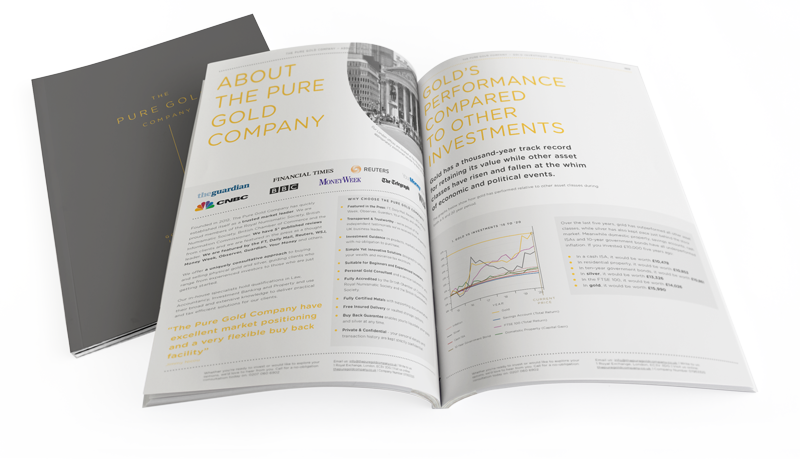Anyone with savings or investments will have felt the tightening noose of inflation and market volatility through the course of 2022. We’ve had to run just to stay still, because doing nothing will cost you 10%, but doing something could mean losing more as markets have yo-yoed. Patience can be a virtue in the midst of uncertainty, but how can you avoid a market rout without losing out to value erosion?
Market view
After more than a decade of quantitative easing and pandemic bailouts, it should have been easy to see the looming inflation crisis. Instead, the world entered 2022 thinking inflation was still ‘transitory’, until the Ukraine war and subsequent energy crisis pushed price rises to 40-year highs.
For years, equities have long benefited from a steady inflow of newly minted currencies. Post financial crisis quantitative easing, bounce-back loans and Covid relief provided a safety net for millions, but in doing so the increased flow of cash propped up and pumped up markets. Most called it a ‘bull market’, but in reality this overvaluation is becoming clear, with markets under pressure through much of the last year. It’s impossible to predict the exact movements of the market, but investors try by using indicators that have been accurate about previous downturns, and one of the most popular is the Shiller CAPE P/E (price/earnings) ratio. This ratio is designed to represent how over or under-valued an entire market is rather than a single stock.
Based on past market movements, when US stocks on the S&P 500 have a ratio above 20 it is more likely the stock market is overvalued, and may be poised for a fall. The ratio for US stocks on the S&P 500 was over 27 in December 2022 having already fallen from 37 in January 2022. This implies there is still further for these stocks to fall before their valuations rebalance.
UK stocks have proved more resilient than their Atlantic counterparts, but the US market is a sombre warning – the consequences of inflation, interest rate rises, government debt burdens and the cost-of-living crisis mean the downside risk outweighs any potential upside.
The equity markets are a very uncertain place going into 2023 but they won’t always be. Recoveries are as inevitable as the slump or crash that precedes them, it’s just a matter of waiting out the storm until the upturn, but where to wait?
Alternative options
Usually low-risk UK government bonds took a hammering when former prime minister Liz Truss’s government announced their largely unfunded mini-budget spending spree, undermining their low-risk reputation. The bond market may have stabilised, but it’s clear unexpected events can be as brutal on bonds as on other seemingly riskier assets. They’re also not providing returns above inflation, which means investments are still being eroded often while locked up in long-term bonds.
Meanwhile property is finally on the downturn in the UK, following in the shadow of a US property market that has been falling for many months already. House prices were propped up by pent up demand and stamp duty holidays during the pandemic, but the cost-of-living crisis, a recession and repeated interest rate rises have converged to squeeze households just as mortgage prices are surging. The outlook for the housing market in the UK is now forecast to be several years of falling prices.
Why Buy Gold In 2025?
Discover how physical gold investment compares to other investment assets for growth and protection.

Meanwhile cryptocurrencies, seen at the start of the pandemic as an digital safe-haven, is experiencing a dramatic ‘crypto winter’ with collapsing currencies, collapsing platforms and plunging values. It lacks clear regulatory scrutiny and the volatility of the sector makes it an even more risky option in the current economic climate.
Opportunity knocks
While the global economy resets to more realistic levels of debt, inflation and interest rates, there are hard times ahead. Markets are not at their bottom, yet. When they do turn though there will be opportunities in all asset classes (possibly even including crypto), the trick is being able to wait outside the volatility until these buying opportunities arise.
Waiting passively isn’t a smart option. Inflation means any cash in the bank is losing value as goods get more expensive. The current astronomical levels of inflation (The Consumer Price Index in October 2022 was 9.6% including housing costs), means cash is guaranteed to lose you money, because savings interest is still way too low to make up for the erosion of inflation.
The alternative is actively waiting. Investors can do this by investing in an asset that is not guaranteed to lose value, may gain it, has no counterparty risk and is almost as liquid as cash. Physical gold is all these things. While the price is not guaranteed to rise, the history of gold has proved its worth as a safe-haven asset which tends to rise when other assets are falling. Because it is a physical commodity, its value also tends to rise alongside other goods as their costs rise. This natural inflation hedge doesn’t mean that gold will directly track the rising costs of other goods, but it does have a better chance than cash of retaining its buying power.
The liquidity of cash makes it easy to quickly respond to opportunities across asset classes, but gold can also be very quickly liquidated when investors need to move fast. While the world is righting itself, gold is a holding pattern that preserves wealth, allowing investors to bide their time and wait out the periods when rewards are insufficient, returning to the market when valuations are compelling again. It also comes with tax advantages. Investment-grade gold is VAT free and can be capital gains tax free as well if you buy Royal Mint minted coins that are legal tender.
Owning gold as part of a diversified portfolio provides some protection against the sort of ‘black swan’ events that are unexpected, destructive and only obvious in hindsight. Gold can be the ‘dry powder’ that’s ready to deploy when the overall risk/reward environment is more compelling, and 2023 is the time to own it.


